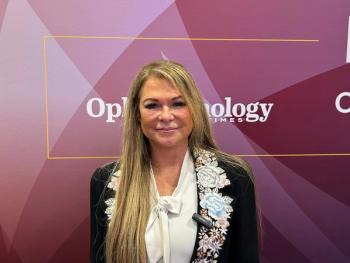
- Ophthalmology Times: November 2024
- Volume 49
- Issue 11
Study explores the true costs of treating pediatric cataracts
Key Takeaways
- Pediatric cataract surgeries are more costly than adult procedures, with significant nonsurgical expenses like anesthesia and postoperative care.
- The bag-in-the-lens (BIL) technique reduces visual axis opacities and inflammation, minimizing the need for costly reinterventions.
Analysis highlights discrepancies between adult, pediatric cataract procedures.
Reviewed by Vinita Rangroo Thrane, MD, PhD; Alexander S. Thrane, MD, PhD, FEBOphth; and Nils-Erik Boonstra, MD
Pediatric cataracts are a leading cause of reversible childhood blindness, but economic constraints make treatment challenging for many patients worldwide. In a presentation at the 42nd Congress of the European Society of Cataract and Refractive Surgeons, Vinita Rangroo Thrane, MD, PhD; and Alexander S. Thrane, MD, PhD, FEBOphth, explored the cost barriers to global pediatric cataract care. Rangroo Thrane and Thrane are consultant ophthalmologists near Oslo, Norway, and board members of the vision charity Right to Sight, dedicated to ending avoidable blindness across Africa.1,2
In their analysis, Rangroo Thrane et al presented a retrospective review of pediatric cataract procedures in Norway, India, and Kenya. Comparative data were collected from several centers in these countries. The team consulted health care facilities, government databases, and community records to gather data, accounting for various costs associated with cataract procedures. As the investigators pointed out, addressing cataracts remains challenging in developing economies, where access to care and appropriate treatment resources may be limited. Awareness of these costs is crucial to advocating for changes in patient workflow and improving pediatric cataract surgery techniques.
Sticker price
For instance, a single nonfoldable polymethyl methacrylate (PMMA) IOL (sourced from Appasamy Associates) can cost as little as $2.12 in India, according to the investigators. A small-incision procedure may cost only $47 for adults. However, fixed and variable costs must also be considered. Fixed costs may include land, buildings, equipment, and personnel, including consultants and surgeons. Variable costs, such as consumables used during surgery, may range widely, depending on the procedure and complications that arise. “The cost of treatment is therefore more than $2.12 for a PMMA lens,” Thrane explained.
A preliminary cost analysis showed that total costs for pediatric cataract surgery vary by location but consistently exceed the cost of similar surgeries for adults. In some centers surveyed, the total cost for adult small-incision cataract surgery was as low as $15.90 per eye. In Norway, the average total cost for pediatric cataract surgery was approximately $1409.80 per child. In Kenya, surgery costs were around $433.54 per child, not accounting for the screening and education costs “baked in” to existing programs in Norway. Once additional outreach and screening costs were included, the total cost for patients in Kenya rose to $1173.42 per child.
Thrane noted that additional costs were mainly nonsurgical. Pediatric patients often have higher costs due to general anesthesia, more extensive long-term postoperative care, additional screenings for amblyopia prevention and glaucoma detection, and the need for corrective eyewear.
Technique as solution?
Surgical techniques varied by location and practitioner. In India and Kenya, surgeons typically used the lens-in-the-bag or aphakia approach with anterior vitrectomy in younger children. In Norway, surgeons have begun using a bag-in-the-lens (BIL) technique. According to Nils-Erik Boonstra, MD, of Haukeland University Hospital in Bergen, Norway, this BIL approach may be well suited for pediatric cataracts. Boonstra implemented the technique at Kwale Eye Centre in Kenya as part of Right to Sight’s initiatives and presented on pediatric cataract surgery using BIL at the 11th Congress of the College of Ophthalmology of Eastern, Central, and Southern Africa (COECSA) in Victoria Falls, Zimbabwe, from August 21 to 23, 2024.
“We all know the principle of the traditional lens in the bag,” Boonstra explained during his COECSA presentation. “An anterior capsulorrhexis is made, and the lens is removed before an artificial lens is implanted into the capsular bag. Hence the name lens in the bag.”
The setup differs slightly in the BIL approach. The surgeon uses a biconvex hydrophilic IOL—a specialized lens introduced by Marie-José Tassignon, MD, PhD, FEBOS-CR, in 1999. This lens has 2 haptic plates with a groove in the center, which Boonstra compared to a bicycle rim. To perform BIL, the surgeon makes equal-sized anterior and posterior capsulorrhexes. The lens is then placed in the groove of the haptics, creating a “bag-in-lens” fit.3
Boonstra explained that BIL is advantageous for pediatric patients as it prevents visual axis opacities (VAO). “Remaining lens epithelium cells proliferate much more aggressively in children than in adults,” he explained. In young children, the anterior vitreous membrane is removed to prevent cell proliferation into the optic axis. However, even with this step, VAO can develop, increasing the need for reintervention with vitrectomy, which requires costly general anesthesia.
With BIL, the remaining lens epithelium cells are trapped in the sealed capsular bag, making vitrectomy unnecessary, even in children younger than 5 years who typically require it in a traditional lens-in-the-bag procedure. BIL prevents VAO and reduces postoperative inflammation, which minimizes steroid needs and makes it suitable for patients with uveitis. Reduced inflammation and fewer secondary interventions are particularly beneficial in developing regions, where follow-up care may be difficult to access. Preliminary data also suggest that pediatric BIL patients may be less prone to secondary glaucoma, although Boonstra noted further research is needed to substantiate this finding.
Implementing the BIL strategy
Boonstra shared outcomes from Kwale Eye Centre, where Right to Sight Norway implemented a BIL-focused approach in November 2023. The team, including Boonstra and Thrane, upgraded the clinic’s ZEISS Opmi Lumera 300 microscope with monitoring and recording capabilities essential for teaching BIL. Surgeons practiced on adult patients before transitioning to pediatric cases and began performing BIL on pediatric patients within 2 days of learning the technique.
Data collection at Kwale Eye Centre began in November 2023. Between then and early August 2024, surgeons performed BIL on 44 eyes in 28 children, including 16 eyes in children younger than 5 years. The early results are promising, with only 5 eyes needing vitrectomy; 2 were in patients younger than 5 years. There were no reports of serious complications, VAO, pupillary membranes, or glaucoma in the cohort. Only 2 eyes required secondary surgery, and 2 patients experienced minor pupil irregularities.
Given that nonsurgical costs are a significant component of pediatric cataract expenses. Boonstra et al believe BIL can mitigate some of these financial burdens. Although surgeons should have a backup vitrector on hand for BIL, it will be used less frequently. The biggest challenge remains the cost of foldable lenses for BIL, which Boonstra described as “enormous” and a barrier to broader implementation. However, he anticipates a solution: through a partnership with Right to Sight, Tassignon, and ophthalmic manufacturers in India, the team aims to reduce production costs for pediatric cataract surgery lenses by late 2024.
“We hope to make BIL more accessible to children needing surgery in India and Africa,” Boonstra said. Meanwhile, he and his colleagues at Right to Sight will continue training surgeons in BIL techniques as a safe, effective solution for pediatric cataracts.
Vinita Rangroo Thrane, MD, PhD
Rangroo Thrane is a consultant pediatric ophthalmologist at Vestfold Hospital and Tønsberg Eye Center in Norway.
Alexander S. Thrane, MD, PhD, FEBOphth
Thrane is a consultant cataract, refractive, and glaucoma surgeon at Memira Eye Center and Tønsberg Eye Center in Norway.
Nils-Erik Boonstra, MD
Boonstra is a consultant vitreoretinal and cataract surgeon at Haukeland University Hospital in Bergen, Norway, and head of the cataract section.
Articles in this issue
Newsletter
Don’t miss out—get Ophthalmology Times updates on the latest clinical advancements and expert interviews, straight to your inbox.



















































.png)


